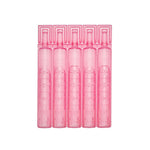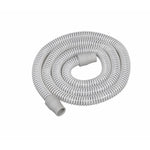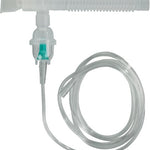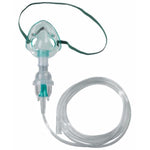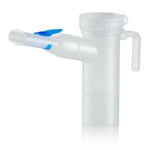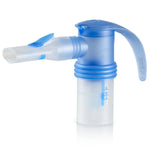You have no items in your shopping cart.
Having a chronic illness such as asthma can be a frightening experience for anyone, especially for children. It is important for parent to help their kids understand their illness and how to manage it in order to live a full and healthy life.
Asthma is characterized by temporary bronchospasms, which obstruct airflow and can cause symptoms such as wheezing, coughing, and shortness of breath. The airflow obstruction and symptoms often happen in reaction to environmental irritants such as pollution or pollen. Cold weather has also been known to increase the frequency of asthma attacks.
Thanks to the current understanding of asthma and the treatments now available, kids suffering from asthma can still participate in sports and normal active play. Although there is no cure for asthma, it can be managed by avoiding triggers, whenever possible, and through the use of medications such as corticosteroids. These are often administered through a portable inhaler or through a nebulizer.
When an asthma attack does occur, it is important for you and your child to have a way of communicating the severity of symptoms. A helpful tool is using color-coded zones to determine what actions should be taken.
The Green Zone: No asthma symptoms are immediately present. Your child can breathe normally and engage in all normal activities.
The Yellow Zone: Your child has mild symptoms of coughing, wheezing, and tightness in the chest. This is causing minor disturbance to daily activities and sleeping. The symptoms can be lessened with rest and medication.
The Red Zone: Symptoms in this zone require immediate medical attention. Your child is breathing rapidly and with great difficulty. They may also be having difficulty talking or walking normally. If this occurs, it is essential to bring your child to a doctor or emergency room as soon as possible.
Some tips for young asthma sufferers include:
- Use the asthma medications prescribed by your doctor
- Keep your inhaler with you at all times
- Use an inhaler and perform warm ups before you exercise
- In cold weather, wear a scarf to keep cold air out of your lungs
- If you have a cold, avoid too much running
- If symptoms occur, stop and rest. Use your inhaler.
- Let your parents and teachers know when you are having an asthma attack and how severe it is.
- Tell your doctor if your asthma gets worse.
For more information on asthma in children, visit:
Having a chronic illness such as asthma can be a frightening experience for anyone, especially for children. It is important for parent to help their kids understand their illness and how to manage it in order to live a full and healthy life.
Asthma is characterized by temporary bronchospasms, which obstruct airflow and can cause symptoms such as wheezing, coughing, and shortness of breath. The airflow obstruction and symptoms often happen in reaction to environmental irritants such as pollution or pollen. Cold weather has also been known to increase the frequency of asthma attacks.
Thanks to the current understanding of asthma and the treatments now available, kids suffering from asthma can still participate in sports and normal active play. Although there is no cure for asthma, it can be managed by avoiding triggers, whenever possible, and through the use of medications such as corticosteroids. These are often administered through a portable inhaler or through a nebulizer.
When an asthma attack does occur, it is important for you and your child to have a way of communicating the severity of symptoms. A helpful tool is using color-coded zones to determine what actions should be taken.
The Green Zone: No asthma symptoms are immediately present. Your child can breathe normally and engage in all normal activities.
The Yellow Zone: Your child has mild symptoms of coughing, wheezing, and tightness in the chest. This is causing minor disturbance to daily activities and sleeping. The symptoms can be lessened with rest and medication.
The Red Zone: Symptoms in this zone require immediate medical attention. Your child is breathing rapidly and with great difficulty. They may also be having difficulty talking or walking normally. If this occurs, it is essential to bring your child to a doctor or emergency room as soon as possible.
Some tips for young asthma sufferers include:
- Use the asthma medications prescribed by your doctor
- Keep your inhaler with you at all times
- Use an inhaler and perform warm ups before you exercise
- In cold weather, wear a scarf to keep cold air out of your lungs
- If you have a cold, avoid too much running
- If symptoms occur, stop and rest. Use your inhaler.
- Let your parents and teachers know when you are having an asthma attack and how severe it is.
- Tell your doctor if your asthma gets worse.
For more information on asthma in children, visit:


